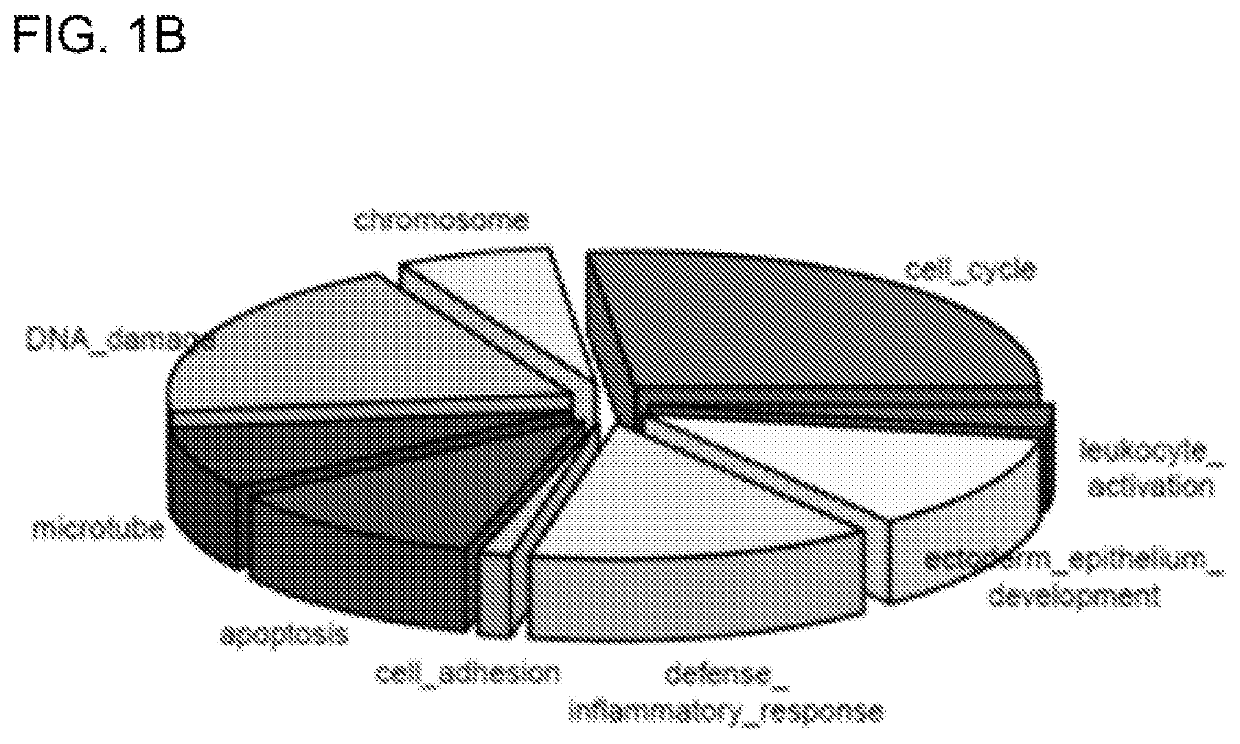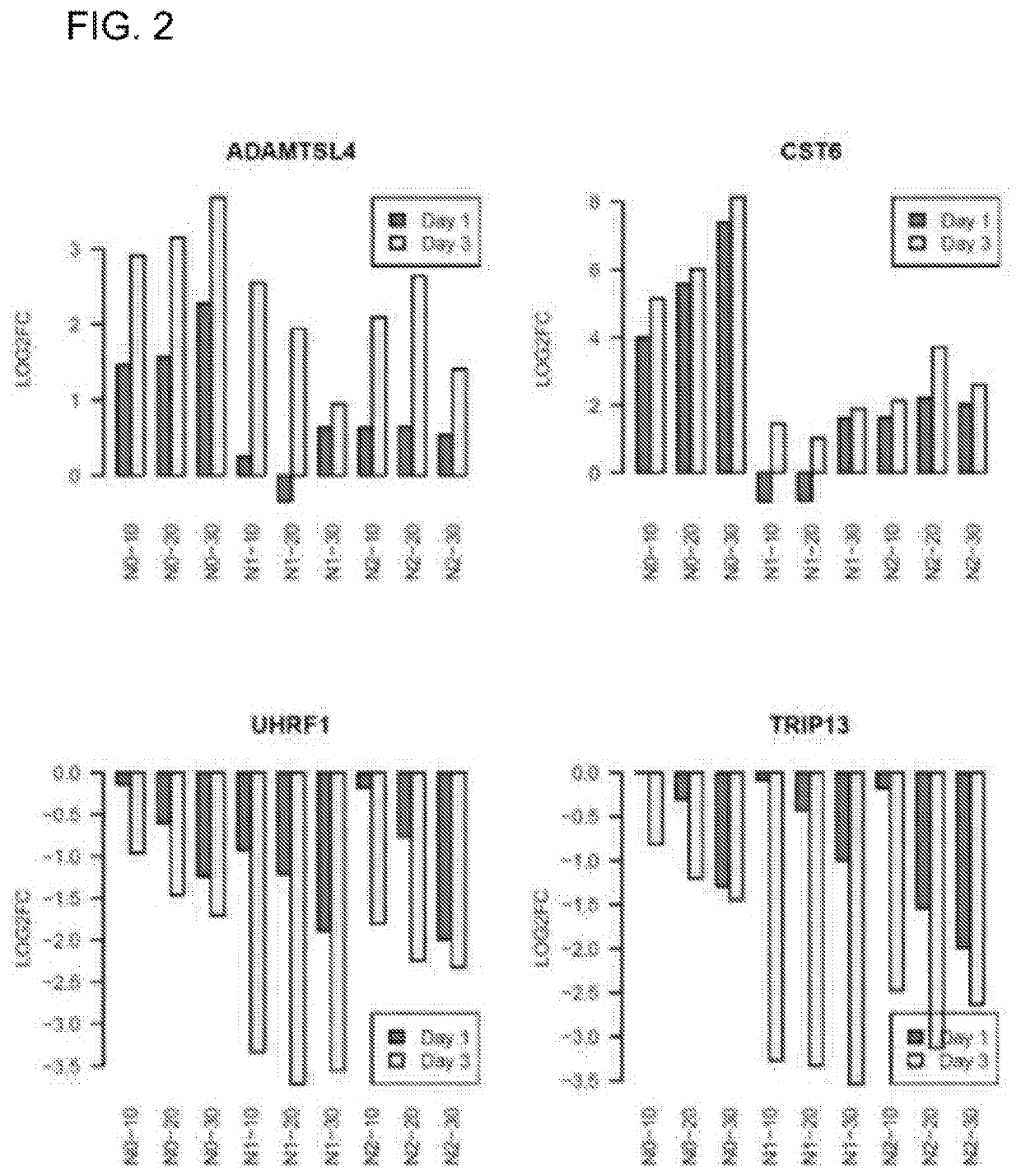Next-generation biomarkers to detect sun damage and predict skin cancer risk
a biomarker and sun damage technology, applied in the direction of microbiological testing/measurement, biochemistry apparatus and processes, etc., can solve the problems of difficult to produce consistent and reliable information on uvr, and achieve the effect of being reliable uvr biomarkers, facilitating characterization, and improving reliability and accuracy
- Summary
- Abstract
- Description
- Claims
- Application Information
AI Technical Summary
Benefits of technology
Problems solved by technology
Method used
Image
Examples
example 1
Materials and Methods
Human Keratinocyte Cultures, Human SCC and Normal Skin Tissues
[0070]Primary human keratinocytes were established from neonatal foreskins through the Columbia University Skin Disease Research Center tissue culture core facility. The protocol was exempt by our Institutional Review Board. Keratinocytes were isolated from separate individual neonatal foreskins (N0, N1, N2, and N6), and cells from each individual were maintained and analyzed separately for assessing individual variations. Keratinocytes were cultured in 154CF medium supplemented with human keratinocyte growth supplement (Life Technologies, Grand Island, N.Y.). Human SCC tumor tissues and matched normal skin tissues from two patients were obtained from the Molecular Pathology Shared Resource / Tissue Bank of the Herbert Irving Comprehensive Cancer Center of Columbia University under CUMC IRB protocol AAAB2667.
[0071]Keratinocytes were rinsed once with PBS and irradiated with UVB supplied by f...
example 2
Transcriptomic Responses to Different UVR Conditions
[0074]In addition to its mutagenic effect, UVR has been shown to cause transcriptomic instability affecting thousands of genes. To fully characterize UVR-induced transcriptomic changes, we took advantage of the recent advances in RNA-Seq to profile UVR-induced kinetic changes in human primary keratinocytes exposed to different UVR conditions (Table 1). We used keratinocytes isolated from four individual neonatal foreskins to generate UVR-induced differentially expressed gene (DEG) lists in response to each of the UVR conditions (Table 1). Together with four DEG lists representing transcriptomic profiles at four hours after exposure, we performed principle component analysis (PCA) to differentiate the DEG profiles under various UVR conditions. As shown in the PCA plot (FIG. 1A), DEG profiles from Day 1 and 3 groups, but not the 4 hour group, demonstrated great similarities with each other in the first principle component (PC1). Alon...
example 3
Time-Dependent Transcriptomic Changes in Response to UVR
[0076]Our PCA analysis in FIG. 1A revealed time-dependent variations in UVR-responsiveness. To identify genes exhibiting time-dependent cumulative UVR responsiveness, we performed paired t-tests to compare the gene expression signatures of Day 3 versus those of Day 1 for each keratinocyte cell line (N0, N1 and N2) under the same UVR dose. 164 out of the 531 up-regulated genes showed higher expressions at Day 3 than at Day 1 (FDR-corrected p-value <0.05); while 239 out of the 610 down-regulated genes were more repressed at Day 3 than at Day 1 at the same p-value threshold (Table 4). Two examples of time-dependent up-regulation include ADAMTSL4, encoding a disintegrin and metalloproteinase; and CST6, encoding a cystatin superfamily protein. Examples of time-dependent down-regulation include UHRF1, encoding a member of a subfamily of RING-finger type E3 ubiquitin ligases; and TRIP13, which encodes a protein that interacts with thy...
PUM
| Property | Measurement | Unit |
|---|---|---|
| Fraction | aaaaa | aaaaa |
| Fraction | aaaaa | aaaaa |
| Fraction | aaaaa | aaaaa |
Abstract
Description
Claims
Application Information
 Login to View More
Login to View More - R&D
- Intellectual Property
- Life Sciences
- Materials
- Tech Scout
- Unparalleled Data Quality
- Higher Quality Content
- 60% Fewer Hallucinations
Browse by: Latest US Patents, China's latest patents, Technical Efficacy Thesaurus, Application Domain, Technology Topic, Popular Technical Reports.
© 2025 PatSnap. All rights reserved.Legal|Privacy policy|Modern Slavery Act Transparency Statement|Sitemap|About US| Contact US: help@patsnap.com



